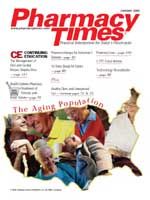Publication
Article
Pharmacy Times
Arthritis Pain Is Linked with Weather
New data have corroborated arthritis patients' argument that changes in thebarometer and cold weather increase their joint pain. The current study examined2 separate sets of data: weather reports and arthritis patients' pain reports.The researchers merged National Oceanic and Atmospheric Administration(NOAA) weather data with the data from an on-line glucosamine trial (a largescalestudy of an OTC arthritis treatment). The glucosamine trial followed 205arthritis patients who reported on their arthritis pain for a 3-month period.
After the trial was completed, the researchers began to look at weather patternswhere the study participants lived. The first step involved identifyingthe closest weather station by ZIP code for each of the study participants.Next, the investigators examined daily weather reports from NOAA that identifiedtemperature, barometric pressure, rainfall, and dew points for the locationsof each of the participants for the study's 3 months. The final stepincluded averaging the weather reports from 1, 3, and 7 days before each participant'sreport of pain and then looking for any change in each measure inthe 24 hours before each pain report.
The evidence showed that changes in barometric pressure were a strongindicator for knee pain, as were cooler temperatures, although not to thesame extent. Rainfall and dew points had no major associations.







